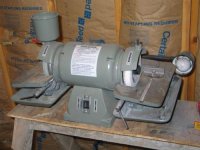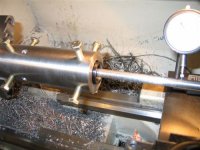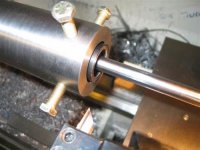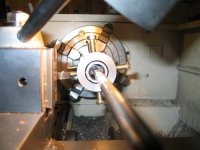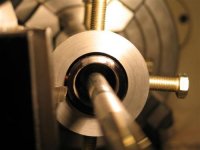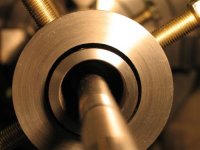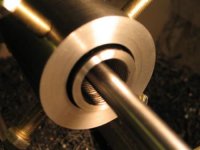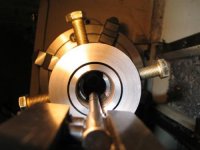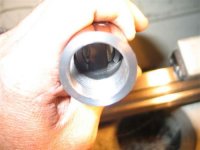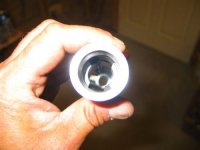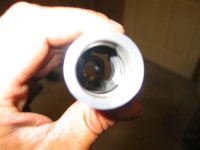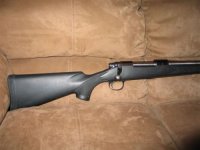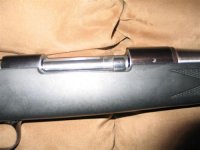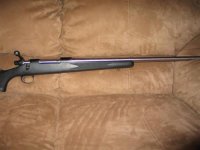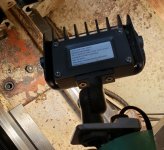I don't see why the action truing fixture in ultramagmed's pictures won't work. It looks to me to be a home made copy of the Gre-Tan jig. It could be shortened a bit (1/2" maybe). More important it could be made considerably safer to work around if brass tipped set screws were used in place of the big meat hook bolts, but other than that, it looks just fine to me.
The bolt sets on Mike Bryant's fixture look to me to be too close together to get the ejection port for even my short action between them. I measure a minimum bolt spacing for my .243 of 3-3/4" to clear the ejection port - Mike's whole jig isn't much more than 4" long, it that. I suspect Mike Bryant's jig has a collet around the receiver inside it. The one Ed Franklin uses is short like that and has a relatively thin aluminum split collet around the receiver. The clamp screws are basically "snug", not "tight", but "snug" works well enough with the very light forces involved.
I don't have a problem with Mike's jig either. It will work just fine.
The Gre-Tan jig, that I've seen advertised on his web-site, is quite a bit longer that Mike Bryant's and looks like it has room for the ejection port of a long action between the bolts.
I believe either jig can work, and in fact I made one of each design on the basis that there could be a situation in which one would work better than the other. They are the two jigs in this picture:
The shorter one, is to be used with an aluminum or brass split collet around the receiver (round receivers only) and is made to the dimensions I got from Ed Franklin when I e-mailed him after buying and watching (several times) his video. The other, which looks like the one every one says is too long, is just long enough to have a bolt in front of and behind the ejection port on my .223, .243, and .30-06 (both long and short actions). I've had it in the lathe and it works just fine. I haven't used the shorter one yet.
I agree shorter is better in theory. But in practice, unless the head stock bearings are too loose to be acceptable for chambering, in which case they should be fixed as the next order of business, it probably doesn't make a difference for jigs like the one in the picture, or my long jig.
Why do I think that? That's a reasonable question, and I'll answer it.
First:
One assumes the headstock bearings are good enough for chambering and the 4J is securely attached to the spindle. If either of these isn't true, the discussion is moot because the lathe is unuseable and needs fixing.
Second:
Once the jig is centered and securely clamped in the 4J, given the light cuts (and resultant very light forces) associated with truing a receiver and machining the locking lugs, it isn't going anywhere and the forces won't cause enough deflection to have any measurable effect on the quality of the work.
Third:
The receiver is aligned in the jig "after" it is centered in the chuck, which makes receiver alignment independent of jig alignment, and the jig isn't removed until after the machining is done. That makes Jig alignment and receiver alignment completely independent within reasonable limits.
To summarize - the forces are light, the jig is stiff enough to have acceptable deflection with the light forces, the jig and receiver are installed and aligned sequentially so their alignment is independent. That being the case I don't really see a problem with the setup in ultramagmed's pictures.
As mentioned in my first paragraph, guy could take a bit off the back end of the jig in the pictures, and swap the meat hook bolts (safety issue) for relatively short brass tipped set screws (like Mike Bryant uses), but other than that it should work just fine.
YMMV. As usual, I don't have any indispensible ego attached to this, it's just simple physics, if I'm missing something I'll learn from having it pointed out, so have at it.
Fitch


